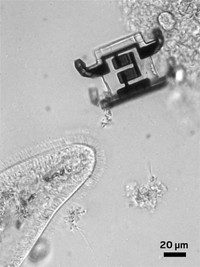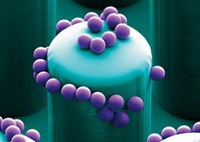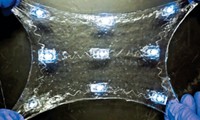Advertisement
Grab your lab coat. Let's get started
Welcome!
Welcome!
Create an account below to get 6 C&EN articles per month, receive newsletters and more - all free.
It seems this is your first time logging in online. Please enter the following information to continue.
As an ACS member you automatically get access to this site. All we need is few more details to create your reading experience.
Not you? Sign in with a different account.
Not you? Sign in with a different account.
ERROR 1
ERROR 1
ERROR 2
ERROR 2
ERROR 2
ERROR 2
ERROR 2
Password and Confirm password must match.
If you have an ACS member number, please enter it here so we can link this account to your membership. (optional)
ERROR 2
ACS values your privacy. By submitting your information, you are gaining access to C&EN and subscribing to our weekly newsletter. We use the information you provide to make your reading experience better, and we will never sell your data to third party members.
Materials
Newscripts
A Bite Of The Apple, Stick-To-Itiveness
by Marc S. Reisch
September 29, 2008
| A version of this story appeared in
Volume 86, Issue 39
Steven Jobs has just lowered the risk of taking a bite out of the Apple. The CEO of the consumer electronics maker Apple Inc. recently launched ENVIRONMENTALLY FRIENDLY VERSIONS of the popular music players iPod Touch, iPod Nano, and iPod Classic. Jobs says the newest players are made with arsenic-free glass and contain no mercury, brominated flame retardants, or polyvinyl chloride resins.
In those products’ more environmentally hostile versions, arsenic, for instance, has prevented defects in the glass of liquid-crystal displays (LCDs), and mercury has been used in the fluorescent lamps that illuminate LCDs.
The environmental group Greenpeace says it believes that the latest generation of iPods is significantly less toxic than earlier models. Greenpeace spokesman Casey Harrell says: “What we’d really like for Christmas is to see Apple remove toxic chemicals from all of its products and announce a free global recycling scheme. Now that would make a very tasty green Apple indeed!”
Greenpeace might also have criticized Apple for producing yet another generation of iPods that make previous versions obsolete. As consumers discard their older models for brand-new upgrades, the older “toxic” versions that aren’t recycled will become hazardous waste (see page 30). The green in this dynamic may well concentrate in the form of greenbacks for Apple.
The gecko continues to be an inspiration for environmentally sensitive scientists. Researchers at the University of California, Berkeley, have created an ADHESIVE THAT CLEANS ITSELF—and thereby remains sticky—after each use without the need for water or chemicals, much like the tiny nanoscale projections on the gecko lizard’s feet.
Ron Fearing, a professor of electrical engineering and computer sciences at UC Berkeley, says this latest advance “brings us closer to being able to build truly all-terrain robots, which will in the future be able to scamper up walls and across ceilings in everyday environments rather than only on clean glass.” Fearing, who heads the research team developing the new materials, adds, “We can envision robots being able to go anywhere they are needed, perhaps in the search for survivors after a disaster.”
Typical sticky tapes are magnets for dirt and can’t be reused, Fearing explains. The gecko-inspired adhesive he and his team have created, however, clears itself of dirt even as it adheres to an underlying surface. But the scientists still have a number of glitches to work out. Smaller contaminants shed more easily than larger particles. As a result, after multiple simulated gecko steps across a sheet of clean glass, a soiled adhesive only recovers one-third of the shear adhesive strength compared with clean samples.
To resolve this challenge, the scientists say they will need to understand more about gecko toes, such as whether the size of the gaps between bundles of toe hairs helps remove dirt. Using what they have learned so far, Fearing says he and his team will next focus on creating an adhesive with geckolike capabilities to deal with rough surfaces, a requirement for an all-terrain robot ready for disaster recovery work.
Among other scientists wowed by the gecko are Jeffrey M. Karp of Harvard Medical School and Robert S. Langer of Massachusetts Institute of Technology. They have used gecko feet as the inspiration for a biocompatible adhesive to seal wounds (C&EN Online Latest News, Feb. 21).
The UC Berkeley scientists designed their adhesive with microfibers made from stiff polymers created to mimic the hairs found on gecko feet. They reported their findings online on Sept. 10 in the ACS journal Langmuir (DOI: 10.1021/la8021485).
Marc S. Reisch wrote this week's column. Please send comments and suggestions to newscripts@acs.org.







Join the conversation
Contact the reporter
Submit a Letter to the Editor for publication
Engage with us on Twitter